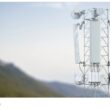The right path
The phone rings. It is a small town police chief, or maybe the sheriff from a county that used to be rural, but now has some new commercial development. The complaint? Their radio system used to work just fine but now they have dead spots. They cannot hear dispatch. The radio techs say everything is working just fine. The officers say it is not. Help!
Evaluating which radio band will provide you the coverage you need involves many factors. A previous article (see “Close race,” November 2009) did a good job of laying out much of the ground work for this discussion. This article will examine additional factors to consider, including ambient noise in the receive paths, which primarily affects the mobile or portable receiver, and the use of tower-top amplifiers at 800 MHz (and sometimes UHF).
Ambient noise — a radio system silent killer — is a major factor. Ambient noise creeps up on a radio system and over many years can result in a significant reduction in system performance. Often little can be done to reduce ambient noise.
Another significant factor has been the change from mobile-based systems to portable-based systems. In the past, first responders operating in rural and suburban areas were lucky to get mobile coverage throughout their area. Now, virtually all first responders expect portable-grade communications throughout their response areas.
This is especially true in areas where responders are out of their vehicles, such as when they enter shopping centers, grocery stores and outlet malls. Many of these areas are full of computerized equipment, not only that which is being offered for sale, but also devices used for security, as point-of-sale terminals, for video games and as office computers, to name a few. Even in rural areas, many homes and farms have multiple computers, satellite dishes, big screen televisions and other advanced electronics. First responders today often are surrounded by such equipment on routine medical and law-enforcement calls.
Virtually all electronic equipment must meet the FCC’s Part 15 rules concerning unintentional radiation. While individual pieces of equipment may comply with the limit, systems of equipment or equipment that is not installed correctly may exceed the limit when aggregated. Also, proximity to Part 15 devices when operating will impact receiver sensitivity degradation. Table 1 lists typical effective receiver sensitivity degradation that I have measured personally at the different frequency bands.
These levels mean that a receiver operating in these areas would need additional signal strength to overcome the ambient noise. In practice, it is not uncommon to find areas that can have 20 dB of ambient noise. While most radio systems are designed to provide more than the minimum receive signal level outdoors, ambient noise often is generated inside buildings or stores where radio signals already are inherently lower than outside due to building structure attenuation.
For example, if the building that houses a store adds 10 dB of signal attenuation, and the receiver sensitivity is degraded by 15 dB due to the point-of-sale terminals, the ability to hear dispatch is reduced by 25 dB. This only affects units that are operating in areas where the signal levels are lower and closer to the receiver sensitivity threshold. If the receiver is in an area with a received signal level of -80 dBm, these effects might not be noticed. However, if the receiver is operating at -100 dBm, they likely will be noticed.
In some cases, users operating their radios in carrier-squelch mode may complain about their squelch opening when they go into a store, restaurant or hospital. At least in this situation, there may be some indication of interference. In cases where users are using CTCSS, the noise may not be heard. The receiver’s effective sensitivity still will be reduced, however.
This problem can be exacerbated with new systems, as the FCC has limited transmitter power from higher sites under the so-called Safe Harbor rules (see FCC rules §90.205). These rules result in significant limits to transmitter power levels for sites that are significantly higher than the average terrain. For instance, a VHF site that is 1,000 feet above average terrain could have its power limited to 65 W of effective radiated power (ERP), or less. While it is possible to request a waiver to these power limits, the success of the request will depend on many factors, and approval is not guaranteed.
Effective receiver sensitivity degradation also is a significant problem at the base station or repeater receiver sites, and typically affects VHF frequencies more than UHF or 800 MHz. While some of this can be controlled by proper filtering, many multi-user sites have elevated noise levels, in part because the cost to adequately control the noise is perceived to be too great, both in equipment performance and in dollars. It is difficult to find a site that doesn’t have at least 6 dB effective receiver degradation at VHF frequencies.
At crowded sites, the situation often is worse because receive frequencies often are very close to transmit frequencies, due to the lack of a consistent band plan. This not only causes additional noise, but receiver desensitization as well. Given the shortage of VHF frequencies in many areas, there often is little that can be done regarding frequency assignments. Careful antenna placement, transmit combiner design and perhaps the use of receive crystal filters can help mitigate these effects for VHF receivers, but they all cause additional loss in the receive path. This generally is less of an issue at UHF and 800 MHz, since transmit and receive frequencies are separated by 5 MHz at UHF and 45 MHz at 800 MHz. This makes filtering easier and transmitter noise significantly less of a problem.
Unfortunately, VHF combiners often are quite large, and on a system with 8-10 channels, the combiners may take up to five racks of space. A similarly sized UHF combiner would typically take one to two rack spaces, while an 800 MHz combiner would require about ½ rack space.
With VHF systems, the base station/repeater receive situation can be difficult at best and usually only in the most simple systems is the inbound receiver actually able to hear down to the noise floor. Even if the site is quiet, the transmission line between the receiver and the antenna will directly add to the receive-side loss. Luckily, at VHF the loss for a cable such as ?-inch coax typically is in the range of 0.5 dB per 100 feet. So, even a 300-foot cable run would result in a normally acceptable loss of only 1.5 dB.
At 800 MHz — and to a lesser degree, 450 MHz — tower-top amplifiers can be used that not only effectively eliminate the receive transmission line loss, but also lower the noise figure of the receive system. The overall noise figure of any receiving system is determined primarily by the noise figure of the first active element in the chain. Discussions about receiver noise figure have been covered before in previous articles in this magazine, so they won’t be repeated here. Certainly, tower-top amplifiers have to be used carefully and they should not be used in all cases. However, a properly designed tower-top amplifier system can improve the receive noise figure by 3 dB or more. This results in a direct improvement in the talk-in capability of 800 MHz portable and mobile radios.
For better or worse, selection of frequency band usually is not determined by which frequencies will perform best in any given situation. Historical preference, tradition, interoperability and equipment costs often are the overriding deciding factors. All are important, as are the technical factors. The discussion about VHF versus 800 MHz usually is framed around the number of sites that need to be built to cover a given area. In general, a system may be able to be built with fewer sites on VHF than 800 MHz, especially in the rural areas. However, in suburban and urban areas, or areas where there are larger towns, the difference in the required number of sites may not be significant. In addition, at 450 MHz and 800 MHz, often there are more frequencies available with which to build a system.
Joe Blaschka Jr., P.E., is principal of ADCOMM Engineering in Bothell, Wash., and is a registered professional engineer in eight states. He has been working in the communications field for more than 40 years and has authored numerous papers and presentations. He can be reached at [email protected].
Related Stories
| TABLE 1: Measured Effective Receiver Sensitivity Degradation | |||
|---|---|---|---|
| Area | VHF | UHF | 800 MHz |
| Residential | 6-8 db | 2-3 db | 0 db |
| Small store | 8-10 db | 4-6 db | 0 db |
| Large store | 10-15 db | 6-8 db | 1-2 db |
| Medical center | 10-15 db | 6-8 db | 1-2 db |
| Industrial areas | 15-20 db | 10-15 db | 3-6 db |

















very good article
very good article